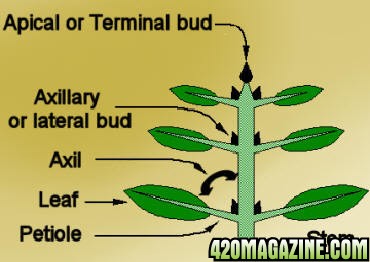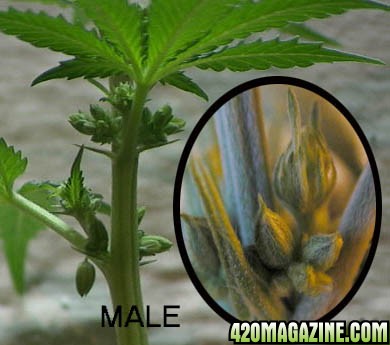When a plant is tied down or bent over, it tries to build a new apical stem. An apical stem is the main shoot that these plants have. When the main one get blocked for some reason (tieing it down or cutting it), a root hormone cause the plant to try to grow a new apical stem.
This is a good thing as it will turn into a cola. So the original stem will keep growing and remain a cola. The people who use LST to wrap their plants in circles (I haven't tried that yet), get many apical stems forming.
Training, whether it be HST or LST, is done for the same reason: to reduce the level of auxins in the tip of the plant. Cannabis is a plant that grows with a characteristic called "apical dominance." This means that, like other plants, it will do everything it can to push a single tip towards the source of light. We call the tip of a plant that grows like this the apical tip or the terminal tip. The tips of the cannabis plants are also where the biggest colas are produced due to their proximity to the source of light.
The tip of the plant is also where a particular type of auxin (plant hormone) is most prevalent. It's called indole-3-acetic-acid (IAA). Unfortunately, due to the chemical properties of IAA, you won't see it in the rooting hormones you can buy. More than likely, you'll find other auxins such as indole-3-butyric-acid (IBA) and/or a-Naphthalene acetic acid (NAA).
Now, the auxins promote growth when they are at certain levels but they can also inhibit, or stunt, the growth of certain aspects of the plants if they are at higher levels. This is the case for cannabis plants. The plant is perfectly happy pushing one bud up as far as it can to the source of light. The other buds, lower down the branch, will remain auxiliary buds and branching is not as likely to occur in these places. This is especially true in smaller, indoor environments. This is because the auxin production within the apical tip is very high, preventing the lower buds from growing out.
So, training, whether HST or LST, is done to accomplish one of two things:
1) Removing/inhibiting the main source of auxins
2) Making the plant think the apical tip is no longer the best source of light
By removing the main source of auxins, the lower (auxiliary) buds are no longer inhibited. The plant will now concentrate on the auxiliary buds and cause branching to occur in order to get itself a new apical tip. In ideal environments, the plant will grow somewhat symmetrically so that means you can very often more than double the number of growing tips.
By making the plant think its apical tip is no longer the best source of light, it will send the message (via auxins and other chemicals) to the auxiliary buds lower down the stem that they need to grow up to get to the light. The tip is not removed, but new bud sites are formed further down the stem. Depending on the length of the stem and strain of the plant, you can get many bud sites to grow this way.
In either case, you end up with more bud sites closer to your light source than before and, most of the time, you'll end up with a more even, bushier canopy to ensure your lights are being utilized to their fullest.
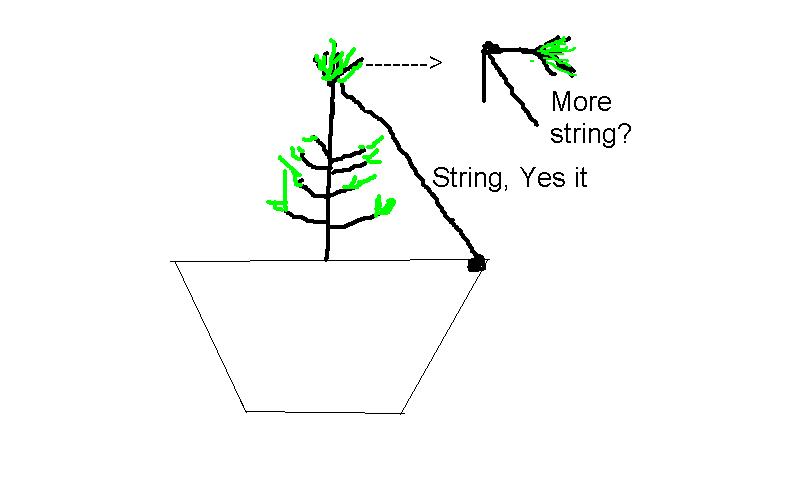



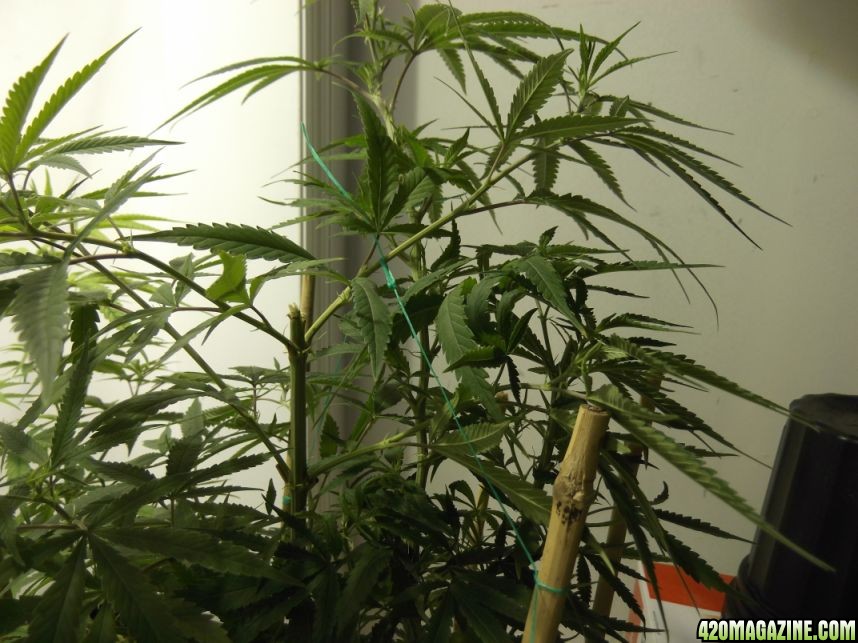
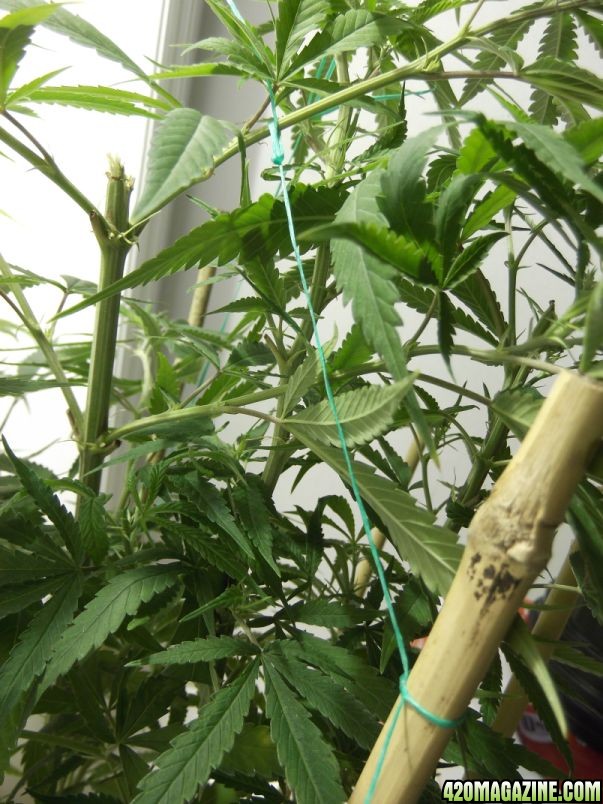

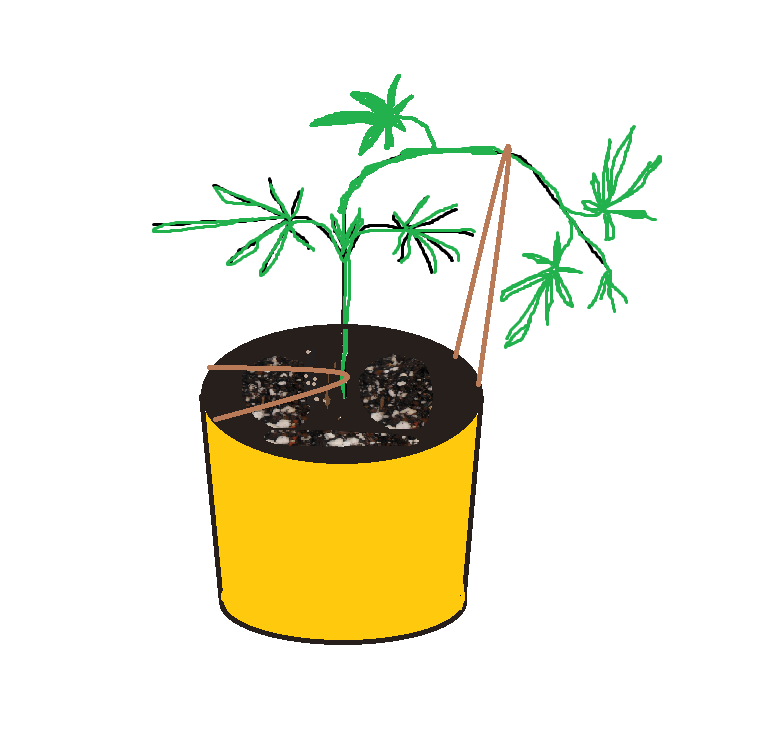
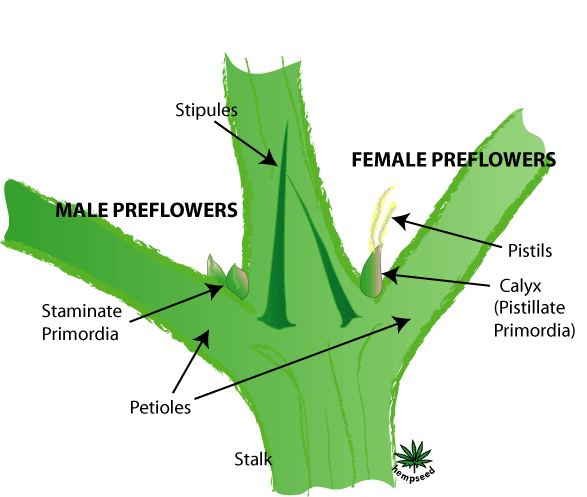
 hahaha
hahaha



